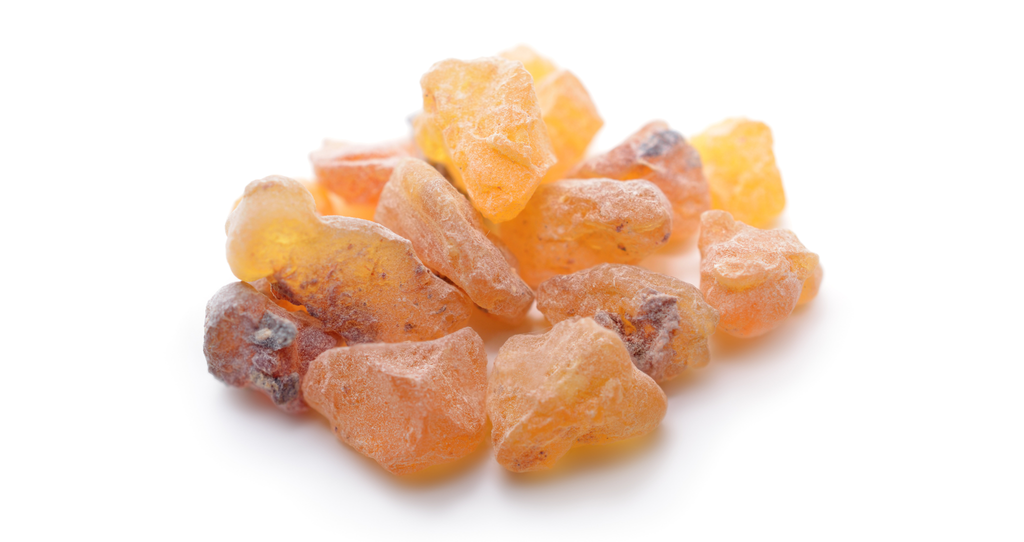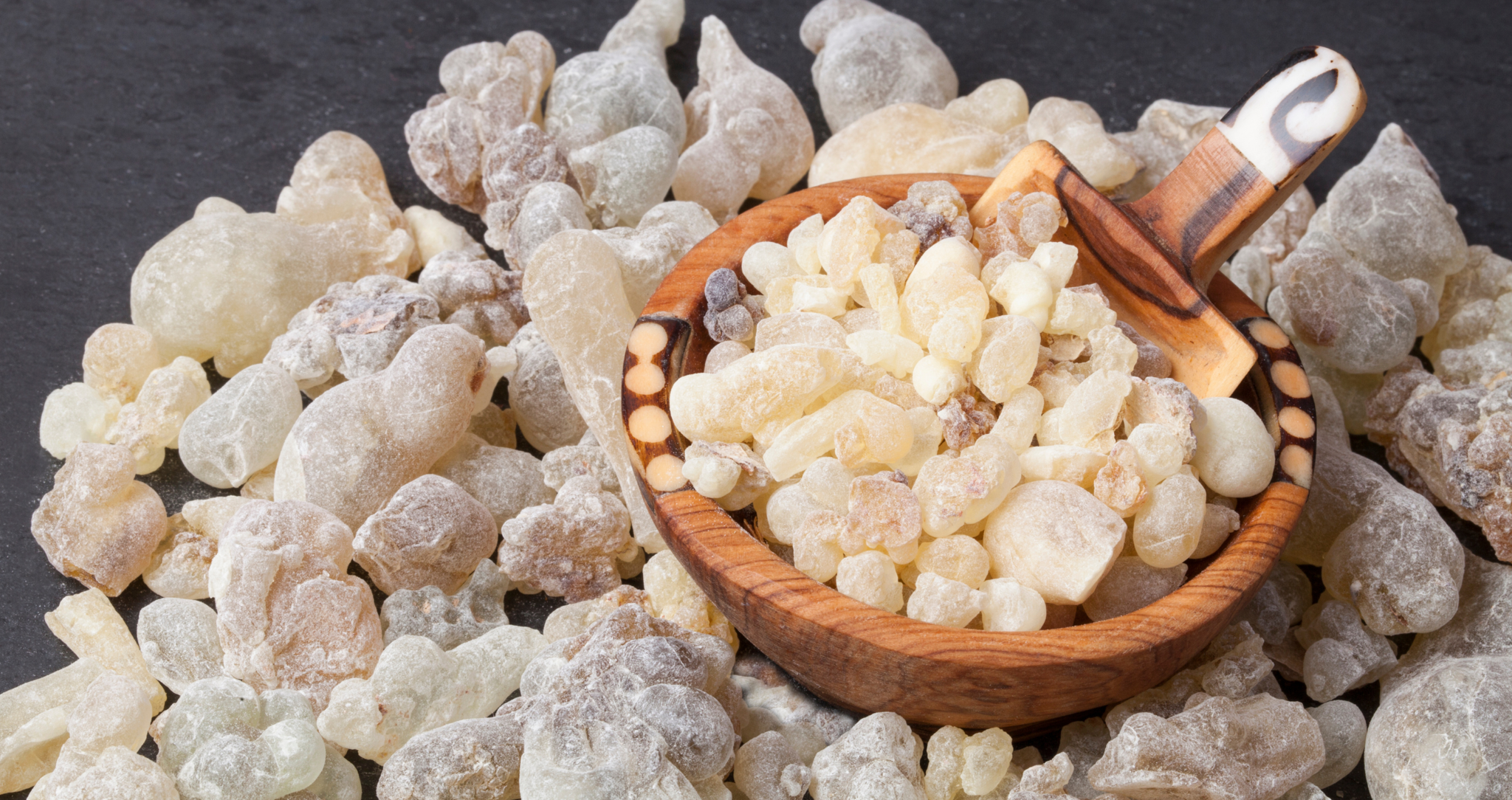
Boswellia Serrata is also known as the "Boswellia tree" and is native to India. However, the tree also grows in dry mountainous areas in North Africa and the Middle East. The tree blooms from January to March with white and pink flowers and produces small triangular nuts. The tree can grow up to 15 meters tall with a canopy up to 10 meters wide. The name serrata comes from the word serra, which means saw and refers to the plant's serrated leaves. The Frankincense tree is especially known for its resin, with a rich scent and taste that is often used in incense, perfumes and dietary supplements.
When the Boswellia tree is approximately 10 years old, it can begin harvesting sap. A mature tree can produce 1 – 1.5 kg of resin per year. The extraction of resin takes place by making an incision in the wood, from which the resin is extracted. After that, the plastic is stored in bamboo baskets with the purpose of absorbing all the oil so that the plastic has a stronger structure. Then, a hammer is used to smash the plastic block, and the small plastic pieces are sorted by hand according to size, color and shape.
Exclusive and gentle merchandise
The history of the Frankincense tree can be traced back to the first recorded stories of human work and barns. The oil extracted from the resin of the Frankincense tree is called "Frankincense" and is described in many ancient texts. The use of Frankincense is also described on Egyptian papyri, which may date back to 1500 BC.
According to religious tradition, it appears that Frankincense was once used to soothe prisoners sentenced to death. Ancient texts also describe Frankincense as an exclusive commodity traded in Europe, Asia and North Africa at prices comparable to commodities such as gold and ivory. Throughout the ages, Frankincense has been used for both religious and cultural events, and to this day incense from the Indian frankincense tree is still used in Catholic Churches.

Frankincense in food protects health
Frankincense extracts are increasingly used as an ingredient in health-protective foods. Although in theory one could experience similar positive effects when using Frankincense, more practical and consistent benefits have been seen when using Frankincense as a supplement in the regimen. eat and drink. When Frankincense is used as an ingredient in health foods, Frankincense is extracted into different extracts through a controlled technological process.
In nutritional supplements, frankincense extract is used to:
- Contributes to bone and joint support
- Contributes to the body's collagen production, which may have beneficial effects on connective tissue, bones and joints
- Contributes to enhancing the strength of bones, muscles, and joints
- Additionally, frankincense extract may: help keep joints cool and comfortable.
- The positive effects that one must highlight of Frankincense, are regulated through EU law. If a use is clearly demonstrated, it can be used in health protection products in significant quantities. Several applications about the effects of plants and plant parts are currently on the waiting list and can also be used to explain to consumers the intended effects of the product (ingredients).

